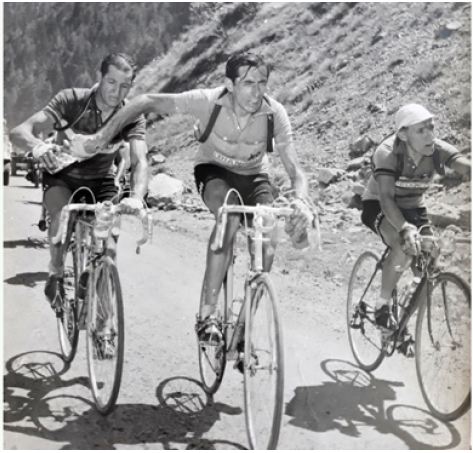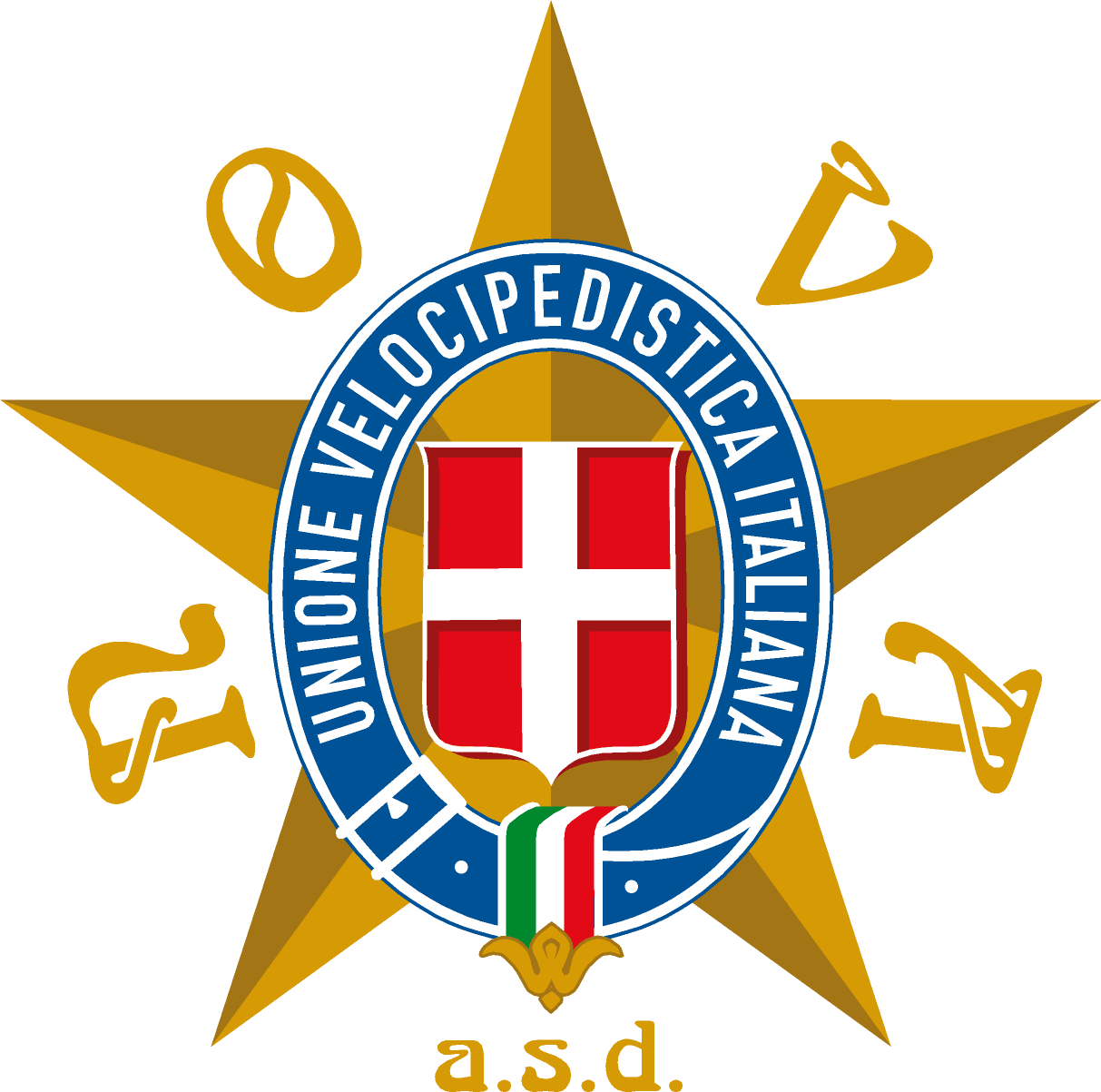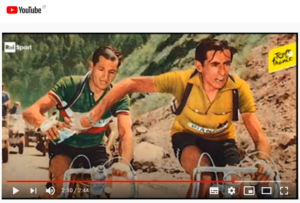Tour de France 1952. Carlo Delfino, Honorary President of the Nova Unione Velocipedistica Italiana, tells the true story of the photo of Coppi and Bartali’s bottle. Stan Ockers was with them on the Col du Télégraphe. ©️ Rai Sport
Tour de France 1952. Carlo Delfino, Presidente Onorario della Nova Unione Velocipedistica Italiana, racconta la vera storia della foto della borraccia di Coppi e Bartali. Stan Ockers era con loro sul Col du Télégraphe. ©️ Rai Sport
VAI AL VIDEO DI RAISPORT

The photo appears on 10 July 1952 in an issue of the magazine “Lo Sport Illustrato”. The Tour de France was underway, Fausto Coppi was dominating, the Italian team was dominating. Coppi and Bartali get along well, exchange water, exchange tubulars, kisses, in short, there is great harmony in the national team.
How did we find the original of this photo? It was a coincidence, as often happens in these things. My friend Marino Vigna who is a former pistard, Olympian in Rome, brought me a packet of photographs of his father and in the midst of these photographs this.
It is as if I have seen the Holy Grail. At some point you see the most famous photo in the world and you see an intruder.
<< But Marino? This photo is important! >>
<< But I didn’t notice, I’ve always seen her like this … >>
<< But it’s the famous photo of the bottle! Coppi and Bartali! >>
We have always seen this photograph cut out. Someone has always wanted us to believe that the two were alone. In reality you could see the shadows of other runners behind. So we went back, through the history of that stage, to the last hairpin bends of the Col du Telegraph.
We have always seen this photograph cut out. Someone has always wanted us to believe that the two were alone. In reality you could see the shadows of other runners behind. So we went back, through the history of that stage, to the last hairpin bends of the Col du Telegraph.
There were six of them, Coppi and Bartali, poor Stan Ockers who was cut from history. And then there was Gelabert, Ruiz a Spaniard and they were chasing a Frenchman, Le Guilly who was on the run. The photo is by Carlo Martini.
Stan Ockers was a champion, that 1952 Tour came second behind Coppi in the overall standings, he was not the last to arrive. He was World Champion in 55, he was a great pistard, unfortunately died young the following year, in 1956, on the track, in a meeting in Antwerp. A nice champion.
La foto compare il 10 luglio del 1952 su un numero della rivista “Lo Sport Illustrato”. Era in corso il Tour de France, fausto Coppi stava dominando, la squadra italiana stradominava. Coppi e Bartali, vanno d’accordo, si scambiano l’acqua, si scambiano i tubolari, baci, insomma c’è grande armonia nella nazionale.
Come abbiamo trovato l’originale di questa foto? È stato un caso, come spesso succede in queste cose. L’amico Marino Vigna che è un ex pistard, Olimpionico a Roma, mi ha portato un pacchettino di fotografie di suo papà ed in mezzo a queste fotografie è spuntata questa.
È come se io avessi visto il sacro Graal. Ad un certo punto ti vedi la foto più famosa del mondo e vedi un intruso.
<<Ma Marino? Questa foto è importante!>>
<<Ma io non c’ho fatto caso, l’ho sempre vista così…>>
<<Ma è la foto famosa della borraccia! Coppi e Bartali!>>
Questa fotografia noi l’abbiamo vista sempre tagliata. Qualcuno ci ha sempre voluto far credere che i due fossero soli. In realtà si vedevano le ombre di altri corridori dietro. Quindi siamo risaliti, attraverso la storia di quella tappa, agli ultimi tornanti del Col du Telegraph.
Erano in sei, Coppi e Bartali, il povero Stan Ockers che è stato tagliato dalla storia. E poi c’era Gelabert, Ruiz uno spagnolo e inseguivano un francese, Le Guilly che era in fuga. La foto é di Carlo Martini.
Stan Ockers era un campione, quel Tour 1952 arriva secondo dietro Coppi nella classifica generale, non era l’ultimo arrivato. È stato Campione del Mondo nel 55, è stato un grande pistard, purtroppo deceduto giovane l’anno dopo, nel 1956, in pista, in una riunione ad Anversa. Un bel campione.

